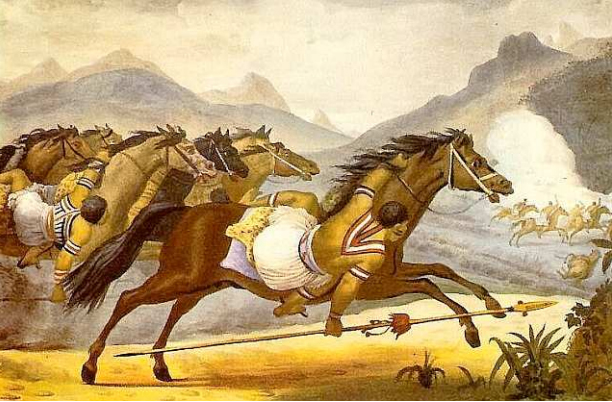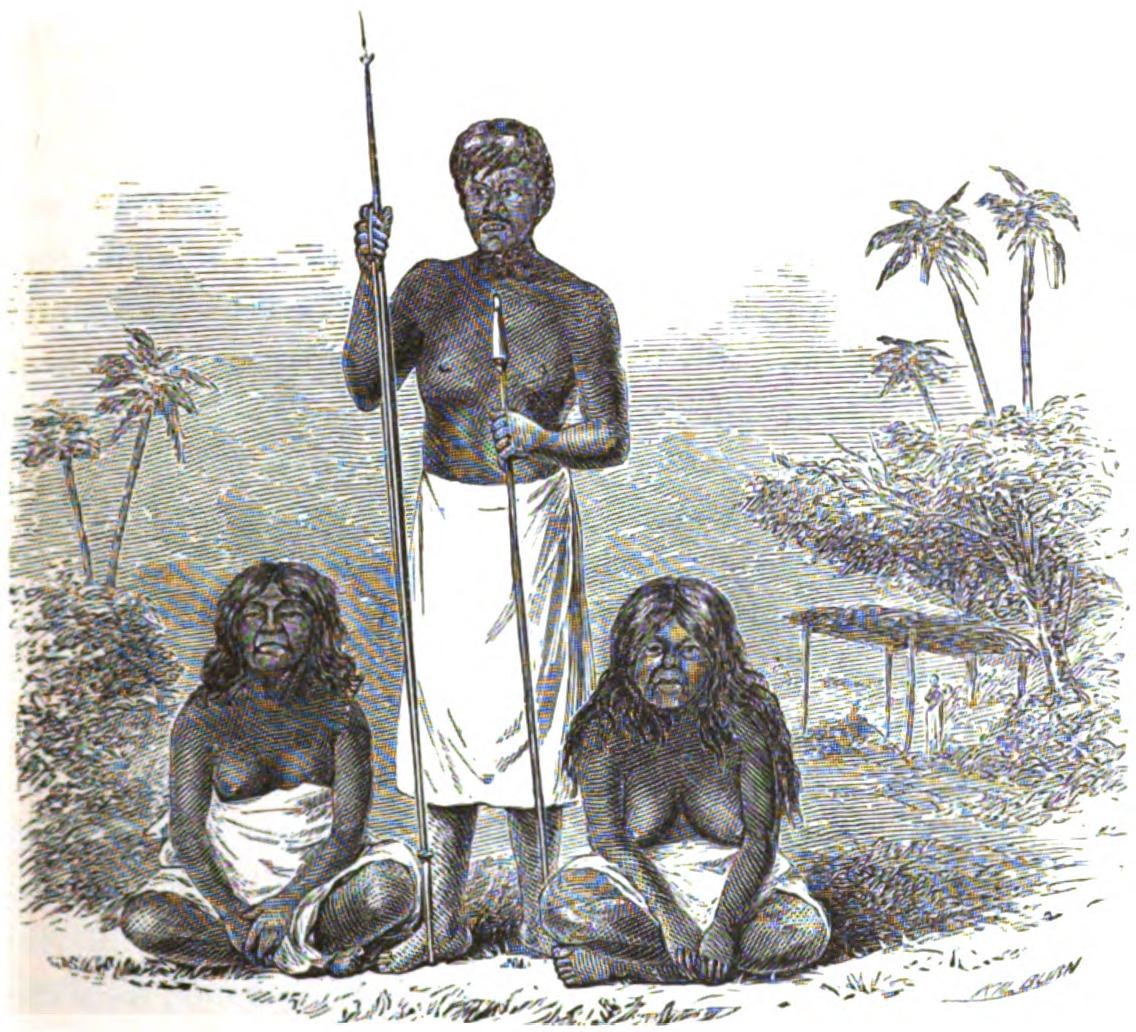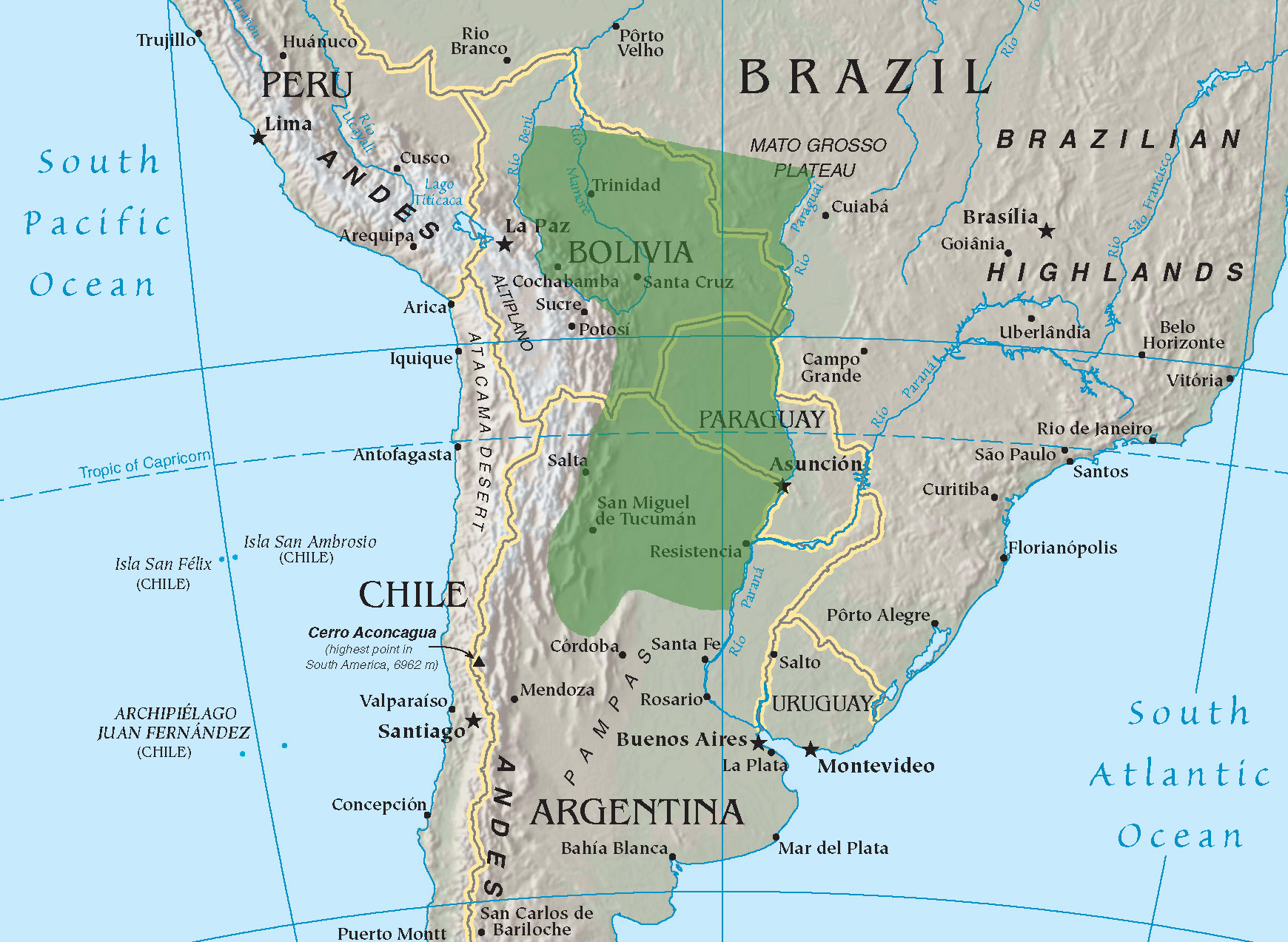|
Guaycuru
Guaycuru or Guaykuru is a generic term for several ethnic groups indigenous to the Gran Chaco region of South America, speaking related Guaicuruan languages. In the 16th century, the time of first contact with Spanish explorers and colonists, the Guaycuru people lived in the present-day countries of Argentina (north of Santa Fe Province), Paraguay, Bolivia, and Brazil (south of Corumbá). The name is written ''guaycurú'' or ''guaicurú'' in Spanish (plural ''guaycurúes'' or ''guaicurúes''), and ''guaicuru'' in Portuguese (plural ''guaicurus''). It was originally an offensive epithet given to the Mbayá people of Paraguay by the Guarani, meaning "savage" or "barbarian", which later was extended to the whole group. It has also been used in the past to include other peoples of the Chaco region, but is now restricted to those speaking a Guaicuruan language. First encountered by the Spanish in the 16th century, the Guaycuru peoples strongly resisted Spanish control and the eff ... [...More Info...] [...Related Items...] OR: [Wikipedia] [Google] [Baidu] |
Mbayá People
The Mbayá or ''Mbyá'' are an indigenous people of South America which formerly ranged on both sides of the Paraguay River, on the north and northwestern Paraguay frontier, eastern Bolivia, and in the adjacent province of Mato Grosso do Sul, Brazil. They have also been called Caduveo. In the 16th century the Mbayá were called Guaycuru, a name later used generically for all the nomadic and semi-nomadic indigenous peoples of the Gran Chaco. The Kadiwéu people of Brazil are the surviving branch of the Mbayá."Kadiwéu: Introduction." ''Povos Indígenos no Brasil.'' (retrieved 3 Dec 2011) The Mbayá called themselves the ''Eyiguayegis'' 'people of the palm', a reference to the abundant in their home ... [...More Info...] [...Related Items...] OR: [Wikipedia] [Google] [Baidu] |
Guaicuruan Languages
Guaicuruan (Guaykuruan, Waikurúan, Guaycuruano, Guaikurú, Guaicuru, Guaycuruana) is a language family spoken in northern Argentina, western Paraguay, and Brazil (Mato Grosso do Sul). The speakers of the languages are often collectively called the Guaycuru peoples. For the most part, the Guaycuruans lived in the Gran Chaco and were nomadic and warlike, until finally subdued by the various countries of the region in the 19th century. Genetic relations Jorge A. Suárez includes Guaicuruan with Charruan in a hypothetical ''Waikuru-Charrúa'' stock. Morris Swadesh includes Guaicuruan along with Matacoan, Charruan, and Mascoian within his '' Macro-Mapuche'' stock. Both proposals appear to be obsolete. Family division There is a clear binary split between Northern Guaicuruan (Kadiwéu) and Southern Guaicuruan according to Nikulin (2019).Nikulin, Andrey V. 2019. The classification of the languages of the South American Lowlands: State-of-the-art and challenges / Классифи ... [...More Info...] [...Related Items...] OR: [Wikipedia] [Google] [Baidu] |
Payaguá People
The Payaguá people, also called Evueví and Evebe, were an ethnic group of the Guaycuru peoples in the Northern Chaco of Paraguay. The Payaguá were a river tribe, living, hunting, fishing, and raiding on the Paraguay River. The name ''Payaguá'' was given to them by the Guaraní, their enemies whom they constantly fought. It is possible that the name of the Paraguay River, and thus the country Paraguay itself, comes from this; the Guaraní told the Spanish that the river was the "Payaguá-ý", or "river of Payaguás." The name they called themselves was probably Evueví, "people of the river" or "water people." The Payaguá were also known to early Spanish explorers as "Agaces" and spelling variations of that name. The Payagua language is extinct; they spoke a Guaycuruan language. No people remain who identify as Payaguá; the descendants of the tribe merged with other Paraguayans, either as mestizos or with other peoples, commonly called Indians. The Payaguá were not ... [...More Info...] [...Related Items...] OR: [Wikipedia] [Google] [Baidu] |
Gran Chaco
The Gran Chaco or Dry Chaco is a sparsely populated, hot and semiarid lowland natural region of the Río de la Plata basin, divided among eastern Bolivia, western Paraguay, northern Argentina, and a portion of the Brazilian states of Mato Grosso and Mato Grosso do Sul, where it is connected with the Pantanal region. This land is sometimes called the Chaco Plain. Toponymy The name Chaco comes from a word in Quechua, an indigenous language from the Andes and highlands of South America. The Quechua word ''chaqu'' meaning "hunting land" comes probably from the rich variety of animal life present throughout the entire region. Geography The Gran Chaco is about 647,500 km² (250,000 sq mi) in size, though estimates differ. It is located west of the Paraguay River and east of the Andes, and is mostly an alluvial sedimentary plain shared among Paraguay, Bolivia, and Argentina. It stretches from about 17 to 33°S latitude and between 65 and 60°W longitude, though estimate ... [...More Info...] [...Related Items...] OR: [Wikipedia] [Google] [Baidu] |
Paraguay
Paraguay (; ), officially the Republic of Paraguay ( es, República del Paraguay, links=no; gn, Tavakuairetã Paraguái, links=si), is a landlocked country in South America. It is bordered by Argentina to the south and southwest, Brazil to the east and northeast, and Bolivia to the northwest. It has a population of seven million, nearly three million of whom live in the capital and largest city of Asunción, and its surrounding metro. Although one of only two landlocked countries in South America (Bolivia is the other), Paraguay has ports on the Paraguay and Paraná rivers that give exit to the Atlantic Ocean, through the Paraná-Paraguay Waterway. Spanish conquistadores arrived in 1524, and in 1537, they established the city of Asunción, the first capital of the Governorate of the Río de la Plata. During the 17th century, Paraguay was the center of Jesuit missions, where the native Guaraní people were converted to Christianity and introduced to European culture. ... [...More Info...] [...Related Items...] OR: [Wikipedia] [Google] [Baidu] |
Abipón People
The Abipones ( es, Abipones, singular ) were an indigenous people of Argentina's Gran Chaco region, speakers of one of the Guaicuruan languages. They ceased to exist as an independent ethnic group in the early 19th century. A small number of survivors assimilated into Argentine society. History The Abipones originally occupied the Gran Chaco of Argentina, in the lower portions of the Bermejo River. They were originally a seasonally mobile people of hunters, gatherers, fishers and to a limited extent farmers. By 1641, the Abipones had already obtained the horse from the Spanish settlers and abandoned farming for cattle and horse raiding. By that time they still lived north of the Bermejo River They became feared by their neighbours and the Spanish farmers, and even threatened major cities. It is likely they were driven south of their original range by the Spaniards and other native tribes, such as the Tobas. They were finally concentrated in the Argentinian territory lying betw ... [...More Info...] [...Related Items...] OR: [Wikipedia] [Google] [Baidu] |
Toba People
The Toba people, also known as the Qom people, are one of the largest indigenous groups in Argentina who historically inhabited the region known today as the Pampas of the Central Chaco. During the 16th century, the Qom inhabited a large part of what is today northern Argentina, in the current provinces of Salta, Chaco, Santiago del Estero, Formosa and the province of Gran Chaco in the southeast of the Department of Tarija in Bolivia (which the Qom have inhabited since the 20th century). Currently, many Toba, due to persecution in their rural ancestral regions, live in the suburbs of San Ramón de la Nueva Orán, Salta, Tartagal, Resistencia, Charata, Formosa, Rosario and Santa Fe and in Greater Buenos Aires. Nearly 130,000 people currently identify themselves as Toba or Qom. With more than 120,000 Qom living in Argentina, the Qom community is one of the largest indigenous communities in the country. Like most indigenous groups in South America, the Qom have a long history o ... [...More Info...] [...Related Items...] OR: [Wikipedia] [Google] [Baidu] |
Santa Fe Province
The Province of Santa Fe ( es, Provincia de Santa Fe, ) is a Provinces of Argentina, province of Argentina, located in the center-east of the country. Neighboring provinces are from the north clockwise Chaco Province, Chaco (divided by the 28th parallel south), Corrientes Province, Corrientes, Entre Ríos Province, Entre Ríos, Buenos Aires Province, Buenos Aires, Córdoba Province, Argentina, Córdoba, and Santiago del Estero Province, Santiago del Estero. Together with Córdoba and Entre Ríos, the province is part of the economico-political association known as the Center Region (Argentina), Center Region. Santa Fe's most important cities are Rosario (population 1,193,605), the capital Santa Fe, Argentina, Santa Fe (369,000), Rafaela (100,000), Reconquista, Santa Fe, Reconquista (99,000) Villa Gobernador Gálvez (74,000), Venado Tuerto (69,000), and Santo Tomé, Santa Fe, Santo Tomé (58,000). The adult literacy rate in the province is 96.3%. History The aboriginal tribes ... [...More Info...] [...Related Items...] OR: [Wikipedia] [Google] [Baidu] |
Mocoví People
The Mocoví (Mocoví: ''moqoit'') are an indigenous people of the Gran Chaco region of South America. They speak the Mocoví language and are one of the ethnic groups belonging to the Guaycuru peoples. In the 2010 Argentine census, 22,439 people self-identified as Mocoví. Not much is known about them before the Spanish arrived. They were nomadic and lived off of their fishing, hunting and gathering. They hunted deer and rhea and slept on animal skins and flimsy shelters. They did not farm because the soil conditions were poor where they roamed and there was flooding. Trade routes were discovered in the Chaco forest, indicating trading and it was assumed they traded skins and feathers for gold, silver and copper objects. When the Jesuits arrived, they taught the Mocoví to farm with cattle and they became sedentary. In 1924, at least 200 Mocoví and Toba people The Toba people, also known as the Qom people, are one of the largest indigenous groups in Argentina who historically ... [...More Info...] [...Related Items...] OR: [Wikipedia] [Google] [Baidu] |
José Pedro Viegas Barros
José is a predominantly Spanish and Portuguese language, Portuguese form of the given name Joseph. While spelled alike, this name is pronounced differently in each language: Spanish ; Portuguese (or ). In French, the name ''José'', pronounced , is an old vernacular form of Joseph, which is also in current usage as a given name. José is also commonly used as part of masculine name composites, such as José Manuel, José Maria or Antonio José, and also in female name composites like Maria José or Marie-José. The feminine written form is ''Josée'' as in French. In Netherlandic Dutch language, Dutch, however, ''José'' is a feminine given name and is pronounced ; it may occur as part of name composites like Marie-José or as a feminine first name in its own right; it can also be short for the name ''Josina'' and even a Dutch hypocorism of the name ''Johanna''. In England, Jose is originally a Romano-British culture, Romano-Celtic surname, and people with this family name can ... [...More Info...] [...Related Items...] OR: [Wikipedia] [Google] [Baidu] |
Joseph Greenberg
Joseph Harold Greenberg (May 28, 1915 – May 7, 2001) was an American linguist, known mainly for his work concerning linguistic typology and the genetic classification of languages. Life Early life and education Joseph Greenberg was born on May 28, 1915, to Jewish parents in Brooklyn, New York. His first great interest was music. At the age of 14, he gave a piano concert in Steinway Hall. He continued to play the piano frequently throughout his life. After graduating from James Madison High School, he decided to pursue a scholarly career rather than a musical one. He enrolled at Columbia College in New York in 1932. During his senior year, he attended a class taught by Franz Boas concerning American Indian languages. He graduated in 1936 with a bachelor degree. With references from Boas and Ruth Benedict, he was accepted as a graduate student by Melville J. Herskovits at Northwestern University in Chicago and graduated in 1940 with a doctorate degree. During the course of ... [...More Info...] [...Related Items...] OR: [Wikipedia] [Google] [Baidu] |
John Alden Mason
John Alden Mason (January 14, 1885 – November 7, 1967) was an American archaeological anthropologist and linguist. Mason was born in Orland, Indiana, but grew up in Philadelphia's Germantown. He received his undergraduate degree from the University of Pennsylvania in 1907 and a doctorate from the University of California, Berkeley in 1911. His dissertation was an ethnographic study of the Salinan Amerindian ethnic group of California. He also authored a number of linguistic studies, including a study of Piman languages. His later ethnographic works included studies of the Tepehuan. The first series of Juan Bobo stories published in the U.S. occurred in 1921. They appeared in the ''Journal of American Folklore'' under the title ''Porto Rican Folklore'', and were collected by Mason from Puerto Rican school children. The story collection consisted of 56 "Picaresque Tales" about Juan Bobo, and included such exotic titles as ''Juan Bobo Heats up his Grandmother'', ''Juan Bobo D ... [...More Info...] [...Related Items...] OR: [Wikipedia] [Google] [Baidu] |




.jpg)

